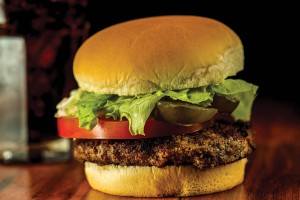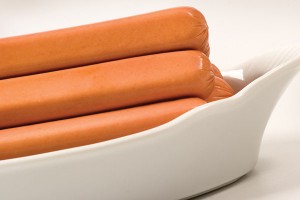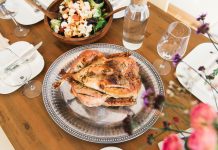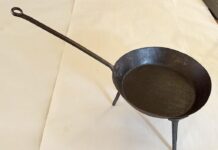When grilling this summer, keep four factors in mind: washing, separating, cooking and refrigerating.
Wash
Thoroughly scrub your grill with hot, soapy water before you use it.
After using, wash all utensils, cutting boards and surfaces with hot, soapy water. This will help to prevent the spread of bacteria.
Don’t forget to wash your hands with warm, soapy water before, during and after food preparation. Wash your hands for at least 20 seconds.
Separate
Avoid cross-contamination when preparing raw meats, poultry and seafood. Use a separate plate for raw meat and a separate plate for cooked meat. Raw meat and juices can contain harmful bacteria.
Same thing goes for utensils. Use one set of utensils for raw meat and another set for cooked meat.
As a general rule of thumb, use a separate cutting board for ready-to-eat foods and raw meats, poultry and seafood (same thing goes for eggs). It’s also a good idea to keep raw meat separate from other foods in the grocery cart and in grocery bags.
Cook
Food must be cooked to a high enough internal temperature to kill harmful bacteria that causes food poisoning.
Don’t rely on appearance alone. Meat that’s brown may not be thoroughly cooked, but meat with some pink might be done. Always use a meat thermometer to make sure meat is cooked to a safe temperature.
Using a food thermometer
A food thermometer has to be placed in a particular spot for each type of food being prepared. For beef, pork or lamb roasts, insert the food thermometer into the center of thickest part. It needs to be away from bone, fat and gristle.
For hamburgers, steaks or chops, insert the food thermometer into the thickest part, away from bone, fat and gristle.
For whole poultry, insert the food thermometer into the innermost part of the thigh, wing and the thickest area away from the bone. For poultry parts, insert the food thermometer into the thickest part, avoiding the bone.
For ground meat and poultry, insert the food thermometer into the thickest area of meatloaf or patty. If patties are thin, insert the food thermometer sideways to reach the center.
For fish, insert the food thermometer into the thickest part away from bone, fat and gristle.
Minimum cooking temperatures
- Ground meat/meat mixtures: 160 degrees
- Fresh beef, veal, lamb and poultry (steaks, roasts and chops): 145 degrees (wait 3 minutes)
- Poultry (chicken, turkey, duck, goose): 165 degrees
- Fresh pork and ham: 145 degrees (wait 3 minutes)
- Precooked ham: reheat to 140 degrees (wait 3 minutes)
- Fin fish: 145 degrees, or until flesh is opaque and separates easily with fork
- Shrimp, lobster, crabs: Cook until pearly and opaque
- Clams, oysters, mussels, scallops: Cook until flesh is milky white or opaque and firm
Refrigerate
Refrigerate cooked meats within two hours of cooking, or within one hour if the temperature is above 90 degrees F. Your refrigerator’s temperature should be no higher than 40 degrees F. Keep a thermometer in your refrigerator to keep track of the temperature.
Leftover meat can be kept in the refrigerator for three to four days. Leftover meat can be safely frozen for about four months.
If you’re transporting leftover food in the car, keep it in the passenger area, not in the trunk.
For information about food storage safety, check out our infographic.
Sources: U.S. Department of Health and Human Services Food Safety, Home Food Safety



















